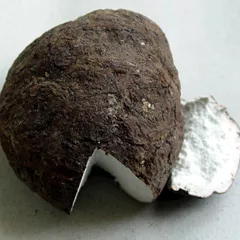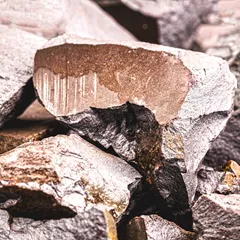Cataracts according to Chinese Medicine
The information provided here is not a replacement for a doctor. You shouldn't use it for the purpose of self-diagnosing or self-medicating but rather so you can have a more informed discussion with a professional TCM practitioner.
In Chinese Medicine, cataracts is sometimes associated with Phlegm-Fluids in the hypochondrium, a so-called "patterns of disharmony". Chinese Medicine sees the body as a system, not a sum of isolated parts. A "pattern" is when the system's harmony is disrupted. It is not equivalent to the Western concept of "disease" because both concepts arise from totally different ways of seeing the human body.
To understand whether someone's cataracts might be caused by the pattern Phlegm-Fluids in the hypochondrium, one needs to look for signs and symptoms associated with the pattern beyond what one might typically experience from cataracts alone. Indeed if cataracts is caused by Phlegm-Fluids in the hypochondrium, patients also experience symptoms such as palpitations and dizziness or vertigo. Similarly, patients with Phlegm-Fluids in the hypochondrium typically exhibit slippery (Hua), soggy (Ru) or wiry (Xian) pulses as well as a pale tongue with thick white coating.
We've listed below a more detailed description of Phlegm-Fluids in the hypochondrium so that you can have a better understanding of where cataracts might find its root according to Chinese Medicine.
Once identified, patterns are often treated using herbal formulas. Drinking herbal infusions is the most common remedy in Chinese Medicine, together with acupuncture. Here we detail below two formulas that can help treat Phlegm-Fluids in the hypochondrium.
Phlegm-Fluids in the hypochondrium, a "pattern of disharmony" associated with cataracts
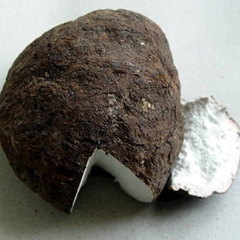
Poria-Cocos Mushrooms (Fu Ling) is the key herb for Ling Gui Zhu Gan Tang, a formula used for Phlegm-Fluids in the hypochondrium
Phlegm-Fluids in the hypochondrium
Pulse type(s): Slippery (Hua), Soggy (Ru), Wiry (Xian)
Tongue coating: Thick white coating
Tongue color: Pale
Tongue shape: Swollen
Recommended herbal formula: Ling Gui Zhu Gan Tang
Symptoms: Palpitations Dizziness or vertigo
Cataracts might be due to Phlegm-Fluids in the hypochondrium if the condition is paired with typical pattern symptoms such as palpitations and dizziness or vertigo. Similarly, patients with Phlegm-Fluids in the hypochondrium typically exhibit slippery (Hua), soggy (Ru) or wiry (Xian) pulses as well as a pale tongue with thick white coating.
The two herbal formulas that might help with cataracts

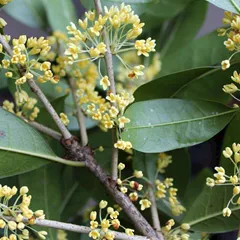

The top herbs in Ling Gui Zhu Gan Tang are Poria-Cocos Mushrooms (Fu Ling), Cinnamon Twigs (Gui Zhi) and Atractylodes Rhizomes (Bai Zhu)
Ling Gui Zhu Gan Tang
Source date: 220 AD
Number of ingredients: 4 herbs
Key actions: Warms and transforms Phlegm-Fluids. Strengthens the Spleen. Resolves Dampness.
Why might Ling Gui Zhu Gan Tang help with cataracts?
Because it is a formula often recommended to help treat Phlegm-Fluids in the hypochondrium, a pattern sometimes associated with cataracts. If it looks like you might suffer from Phlegm-Fluids in the hypochondrium, this formula might help (although please seek confirmation with a professional practitioner beforehand).
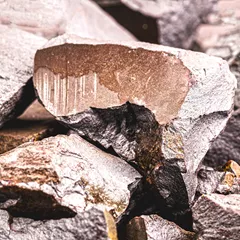
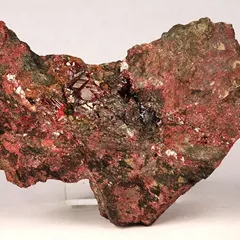
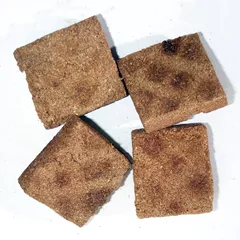
The top herbs in Ci Zhu Wan are Magnetite (Ci Shi), Cinnabar (Zhu Sha) and Medicated Leaven (Shen Qu)
Ci Zhu Wan
Source date: 650 AD
Number of ingredients: 4 herbs
Key actions: Heavily sedates and calms the Mind . Pacifies Rising Yang . Improves the vision and hearing.
Why might Ci Zhu Wan help with cataracts?
Because it is a formula often recommended to help treat , a pattern sometimes associated with cataracts. If it looks like you might suffer from , this formula might help (although please seek confirmation with a professional practitioner beforehand).

